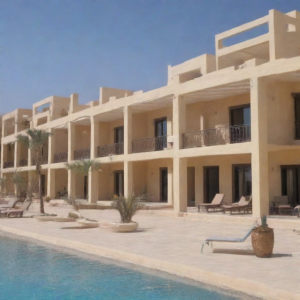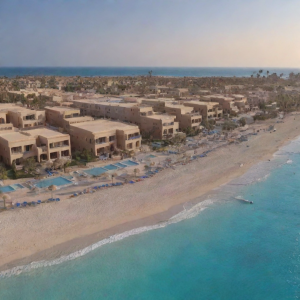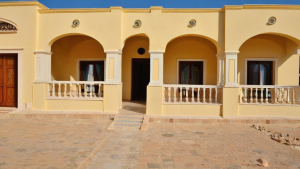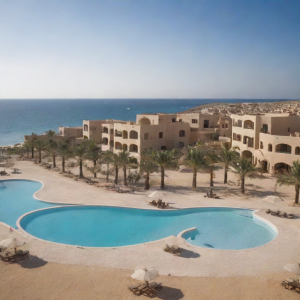Summary about owning and buying property in Hurghada, Egypt.
- Evaluating the Profitability of Investing in Red Sea Coastal Property TodayUnderstanding the Appeal of Red Sea Coastal Real Estate.
- Several governments are investing heavily in the Red Sea region’s development, aiming to transform it into a global tourism hub.
- Given the limited coastline and increasing demand, properties along the Red Sea coast tend to appreciate in value over time.
- Coastal real estate, in general, is considered a valuable asset due to its scarcity and sought-after location.
- If you’re considering investing in Red Sea coastal real estate, keep in mind this is not just a short-term speculation but a medium to long-term commitment that can yield attractive returns with the right strategy.
Evaluating the profitability of investing in red sea coastal property today
Understanding the appeal of red sea coastal real estate
Investing in coastal property along the Red Sea has attracted considerable attention over recent years. The region’s unique combination of natural beauty, growing tourism, and government-backed development projects makes it a compelling option for real estate investment. But is investing in Red Sea coastal property still profitable today? To answer this, it’s essential to look at several factors shaping the market.
Factors driving profitability in red sea coastal property
Strong tourism growth
The Red Sea coast is celebrated for its crystal-clear waters, vibrant coral reefs, and warm climate. Tourist numbers have steadily increased, supported by regional marketing campaigns and infrastructure expansion. As tourism flourishes, the demand for short-term rental properties, resorts, and vacation homes rises, creating opportunities for property owners to generate consistent rental income.
Government initiatives and mega projects
Several governments are investing heavily in the Red Sea region’s development, aiming to transform it into a global tourism hub. Megaprojects, such as luxury resorts and new urban developments, bolster the market’s attractiveness. These initiatives signal long-term economic growth and infrastructural upgrades, which usually translate to rising property values.
Favorable climate for real estate appreciation
Given the limited coastline and increasing demand, properties along the Red Sea coast tend to appreciate in value over time. Coastal real estate, in general, is considered a valuable asset due to its scarcity and sought-after location. The Red Sea area benefits not only from natural allure but also from proximity to air and sea transport links, enhancing accessibility for tourists and business travelers alike.
Challenges potential investors should consider
Market volatility and economic conditions
Like any investment, Red Sea coastal property is affected by global and regional economic shifts. Fluctuations in oil prices, geopolitical tensions, or broader market instability can impact property demand. It’s essential to analyze macroeconomic trends and have a risk management approach to buffer against potential downturns.
Regulation and legal framework
Understanding the local property laws and regulations is paramount. Some countries in the Red Sea region have specific restrictions regarding foreign ownership, development requirements, or property usage. An investor must navigate these rules carefully to avoid legal complications and ensure their investment is secure.
Environmental and sustainability concerns
Coastal properties face environmental risks such as rising sea levels and ecological degradation. The Red Sea’s delicate marine ecosystem requires sustainable development practices to preserve its appeal. Investors should look for projects that adhere to environmental standards to protect their property’s long-term viability.
How to maximize profitability in red sea coastal property investment
Choose locations with high development potential
Focus on areas earmarked for significant government or private investment. Emerging resort towns, areas near planned infrastructure, or new tourism zones often offer better capital appreciation prospects than already saturated markets.
Consider rental income opportunities
Properties that can generate steady rental income through vacation rentals or lease agreements add to profitability. Engage with property managers or real estate experts familiar with the local rental market to assess expected returns.
Engage local expertise
Working with local real estate agents, legal advisors, and market analysts helps identify the best investment opportunities. Local experts provide insights on market trends, pricing, and regulatory compliance, reducing investment risk.
Is it the right time to invest?
Currently, the Red Sea coastal property market still shows promising signs of profitability. The combination of ongoing development projects, rising demand for tourism accommodations, and the natural allure of the coastline supports sustained value growth. However, success relies on thorough due diligence, understanding market cycles, and aligning investments with long-term development plans of the region.
If you’re considering investing in Red Sea coastal real estate, keep in mind this is not just a short-term speculation but a medium to long-term commitment that can yield attractive returns with the right strategy. Evaluating local market conditions, legal frameworks, and environmental sustainability will equip you to make informed decisions.
Key takeaways for investors
- Red Sea coastal property benefits from strong tourism growth and government-led development.
- Property values are likely to appreciate due to limited coastal supply and rising demand.
- Carefully assess legal regulations concerning foreign ownership and property rights.
- Consider environmental risks when selecting properties to ensure long-term sustainability.
- Maximize returns by targeting emerging locations and capitalizing on rental income opportunities.
- Leverage local expertise to navigate market nuances and minimize risks.
Investing in the Red Sea coastal region remains a potentially profitable opportunity for those who approach it with strategic planning and thorough research. By staying informed about market dynamics and development trends, you can position yourself advantageously in this appealing real estate market.
Key factors influencing future growth in red sea coastal real estate market
Economic development and investment initiatives
The Red Sea coastal region is witnessing a surge in economic development fueled by ambitious government projects and foreign investments. These initiatives aim to transform the area into a premier tourist and luxury destination, which plays a crucial role in enhancing the value of coastal properties. When you consider investing in Red Sea coastal real estate, it’s important to recognize that ongoing infrastructural expansions will significantly improve accessibility, making these areas more attractive to tourists and residents alike.
Large-scale projects like the Red Sea Development and NEOM City are set to bring advanced infrastructure, luxury resorts, and recreational facilities. This not only boosts tourism but also stimulates the local economy, attracting international buyers and driving up property demand. As a potential investor, keeping an eye on such economic developments can help you predict appreciating property values and rental income potential.
Environmental sustainability and preservation efforts
Another key factor impacting the future growth of real estate along the Red Sea coast is the increasing emphasis on environmental conservation. The region’s rich marine biodiversity and natural beauty are its biggest assets, and sustainable tourism is essential for long-term success. Projects now incorporate eco-friendly designs and environmental impact assessments to ensure minimal damage to coral reefs and natural habitats.
For investors, this focus on sustainability offers a dual advantage. Properties that comply with green building standards often attract higher-end buyers who are willing to pay a premium for an eco-conscious lifestyle. Plus, sustainable developments tend to have better longevity in the market, offering more stable appreciation over time. This trend signals a shift away from unchecked development towards responsible real estate growth, preserving the area’s charm and desirability.
Infrastructure and accessibility improvements
Accessibility remains a cornerstone in determining the profitability of Red Sea coastal properties. Recent upgrades to airports, roads, and port facilities have significantly shortened travel times from major cities and international hubs. This development increases the convenience factor for tourists and residents, which in turn, heightens real estate demand.
You should consider how proximity to new transport links affects property value. Areas close to upgraded infrastructure often experience faster price appreciation, better rental yields, and increased commercial opportunities. Furthermore, government plans to expand high-speed rail networks and public transport options within the region indicate a future of enhanced mobility, paving the way for broader market growth.
Tourism growth and market demand
The Red Sea’s pristine beaches, diving spots, and luxury resorts have made it a magnet for tourists from both regional and international markets. This rising influx of tourists directly impacts the local housing market, especially for vacation homes, short-term rentals, and luxury real estate.
The ongoing development of tourist attractions and hospitality projects suggests that demand for accommodation,both permanent and seasonal,will continue to grow. Investors looking into Red Sea coastal property will benefit from rental income streams generated by short-term holiday lets, which typically yield higher returns than traditional residential rentals.
Moreover, the diversification of tourism through niche markets such as eco-tourism, adventure tourism, and wellness resorts adds new layers of demand to the real estate sector. As you evaluate your investment options, understanding these market dynamics can help you choose properties with the best potential for capital gains and stable income.
Regulatory environment and ownership laws
Legal frameworks and ownership regulations play a vital role in shaping investor confidence and market dynamics in the Red Sea coastal area. In recent years, regulatory reforms have increasingly opened up opportunities for foreign investors while providing protections to maintain market stability.
Investing in property where there is clear, transparent legislation ensures fewer risks related to ownership disputes and easier property transactions. Familiarizing yourself with local laws regarding property ownership, leasing, and taxation can prevent unforeseen complications. The government’s commitment to streamlining property registration and title verification processes also enhances the overall investment climate.
Market trends and price appreciation potential
Monitoring current real estate market trends is essential to gauge the growth trajectory of Red Sea coastal properties. Over the past few years, property prices in prime coastal areas have shown steady appreciation due to increased demand from both domestic and international buyers.
By keeping an eye on market reports and data trends, you can identify emerging hotspots where property values are expected to rise faster. This includes newly developed zones with upgraded amenities, as well as areas targeted by big developers. Diversified property offerings ranging from affordable apartments to luxury villas provide multiple entry points for investors with varying budgets.
Community development and lifestyle amenities
Future growth in coastal real estate is not only tied to the natural environment and infrastructure but also to the development of vibrant community spaces. Integrated communities featuring retail outlets, healthcare services, educational institutions, recreational parks, and cultural venues significantly enhance the desirability of properties within their vicinity.
As a homebuyer or investor, looking for areas with comprehensive lifestyle amenities ensures sustained demand and higher liquidity for your property. These communities tend to attract families and long-term residents, adding stability to the local real estate market. Future developments that prioritize quality of life alongside natural beauty stand the best chance of achieving rapid growth.
Technological integration and smart city developments
Technology is becoming a pivotal part of the Red Sea coastal real estate market, particularly as smart city projects like NEOM evolve. smart infrastructure and digital services enhances security, energy efficiency, and overall living experience.
Properties embedded within tech-forward environments often benefit from higher market demand and valuation. Investors should watch for advancements in digital connectivity, automated building management, and renewable energy integration as these innovations become more widespread. Being part of this cutting-edge real estate segment could provide an edge in a competitive market.
Investing in Red Sea coastal property remains a compelling opportunity for many buyers, but its profitability depends on careful evaluation of current conditions and future potential. Today, the market benefits from strong tourism projects, government initiatives, and growing infrastructure, which all contribute to steady demand. Yet, investors should keep an eye on fluctuating economic factors and seasonal market trends that may affect short-term returns.
Looking ahead, key drivers such as large-scale development plans, sustainability efforts, and improved connectivity promise to strengthen the Red Sea real estate market. These elements are expected to increase property values and rental yields over time, making it worthwhile for those ready to commit for the long run. However, staying informed about regulatory changes and environmental considerations is crucial to navigating risks and maximizing gains.
Ultimately, profitability in Red Sea coastal property hinges on balancing present opportunities with future growth prospects. By understanding what shapes this unique market, you can make smarter investment choices that align with your financial goals. Whether you’re a seasoned investor or a first-time buyer, considering these factors will help you determine if this vibrant region matches your investment strategy and risk tolerance. The Red Sea coast offers promise, but like any investment, success depends on thoughtful planning and ongoing market awareness.










